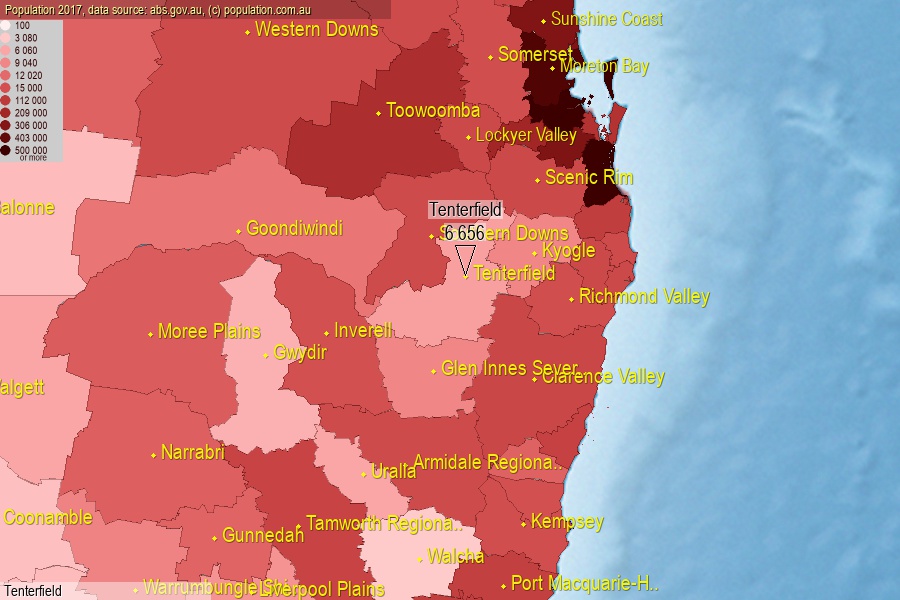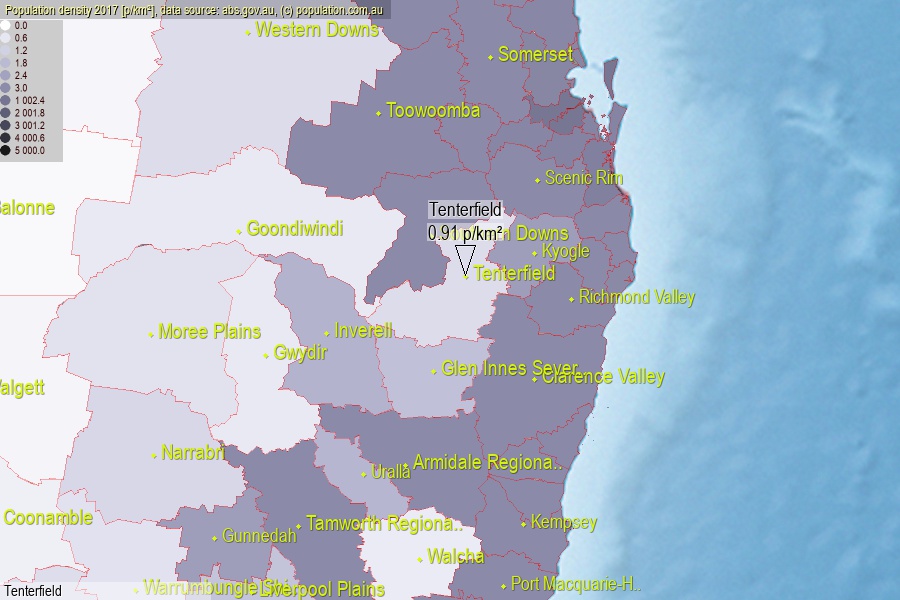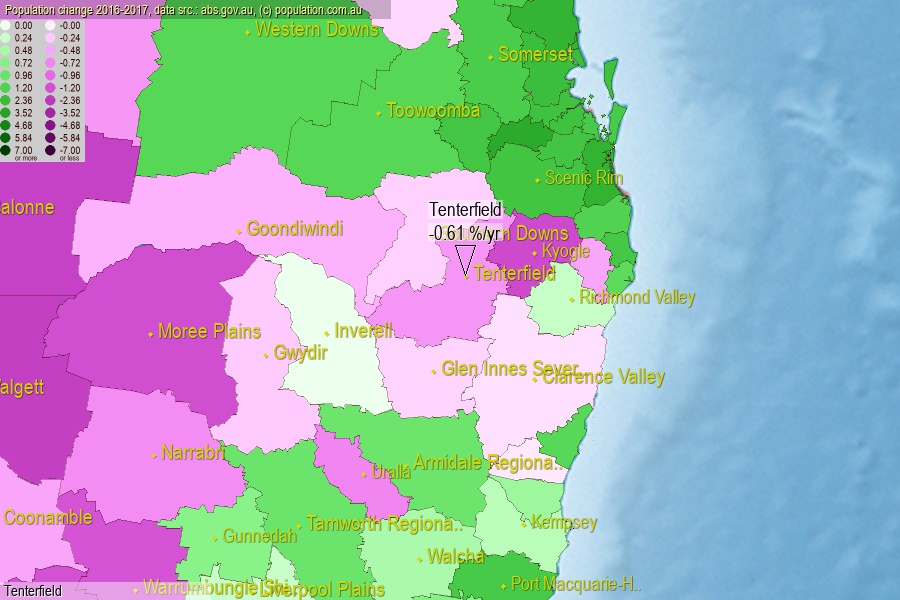 population.com.au
population.com.auLast official estimated population of Tenterfield Area (as Local Government Area) was 6 656 people (on 2017-06-30)[2]. This was 0.03% of total Australian population and 0.084% of NSW population. Area of Tenterfield is 7 322.80 km², in this year population density was 0.91 p/km² . If population growth rate would be same as in period 2016-2017 (-0.61%/yr), Tenterfield population in 2025 would be 6 337. [0]



Click to enlarge. Tenterfield is located in the center of the images.
Population [people], population density [p./km²] and population change [%/year] [2]
[1996-2001] +0.48 %/Y
[2001-2002] -0.50 %/Y
[2002-2003] -1.45 %/Y
[2003-2004] -0.88 %/Y
[2004-2005] -0.30 %/Y
[2005-2006] +0.54 %/Y
[2006-2007] +0.98 %/Y
[2007-2008] +0.97 %/Y
[2008-2009] +1.27 %/Y
[2009-2010] +0.86 %/Y
[2010-2011] +0.71 %/Y
[2011-2012] -0.93 %/Y
[2012-2013] -1.31 %/Y
[2013-2014] -0.95 %/Y
[2014-2015] -0.83 %/Y
[2015-2016] -0.24 %/Y
[2016-2017] -0.61 %/Y
[0] Calculated with linear interpolation from officially estimated population
[1] Read more about LGA and Australian Statistical Geography Standard (ASGS) on abs.gov.au
[2] Population data from Australian Bureau of Statistics (Population and density: 2017; change: 2016-2017)
[3] Digital Boundaries: Australian Statistical Geography Standard (ASGS) 2016.